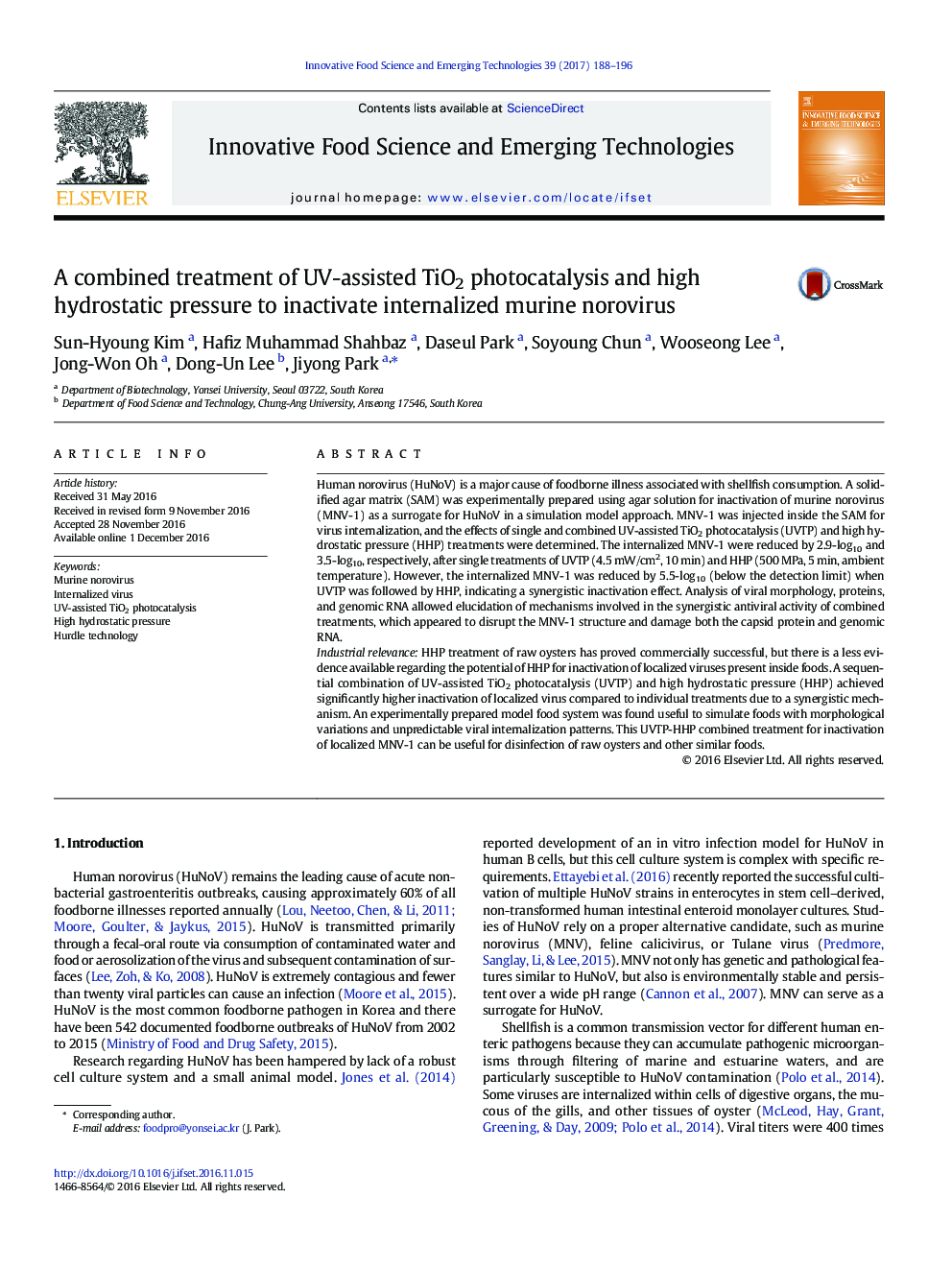| Article ID | Journal | Published Year | Pages | File Type |
|---|---|---|---|---|
| 5521864 | Innovative Food Science & Emerging Technologies | 2017 | 9 Pages |
â¢Nonthermal combined treatments were applied to inactivate internalized MNV-1.â¢A solidified agar matrix (SAM) was used as food simulator.â¢UVTP-HHP disrupted viral capsid protein and RNA via synergistic effect.
Human norovirus (HuNoV) is a major cause of foodborne illness associated with shellfish consumption. A solidified agar matrix (SAM) was experimentally prepared using agar solution for inactivation of murine norovirus (MNV-1) as a surrogate for HuNoV in a simulation model approach. MNV-1 was injected inside the SAM for virus internalization, and the effects of single and combined UV-assisted TiO2 photocatalysis (UVTP) and high hydrostatic pressure (HHP) treatments were determined. The internalized MNV-1 were reduced by 2.9-log10 and 3.5-log10, respectively, after single treatments of UVTP (4.5Â mW/cm2, 10Â min) and HHP (500Â MPa, 5Â min, ambient temperature). However, the internalized MNV-1 was reduced by 5.5-log10 (below the detection limit) when UVTP was followed by HHP, indicating a synergistic inactivation effect. Analysis of viral morphology, proteins, and genomic RNA allowed elucidation of mechanisms involved in the synergistic antiviral activity of combined treatments, which appeared to disrupt the MNV-1 structure and damage both the capsid protein and genomic RNA.Industrial relevanceHHP treatment of raw oysters has proved commercially successful, but there is a less evidence available regarding the potential of HHP for inactivation of localized viruses present inside foods. A sequential combination of UV-assisted TiO2 photocatalysis (UVTP) and high hydrostatic pressure (HHP) achieved significantly higher inactivation of localized virus compared to individual treatments due to a synergistic mechanism. An experimentally prepared model food system was found useful to simulate foods with morphological variations and unpredictable viral internalization patterns. This UVTP-HHP combined treatment for inactivation of localized MNV-1 can be useful for disinfection of raw oysters and other similar foods.
